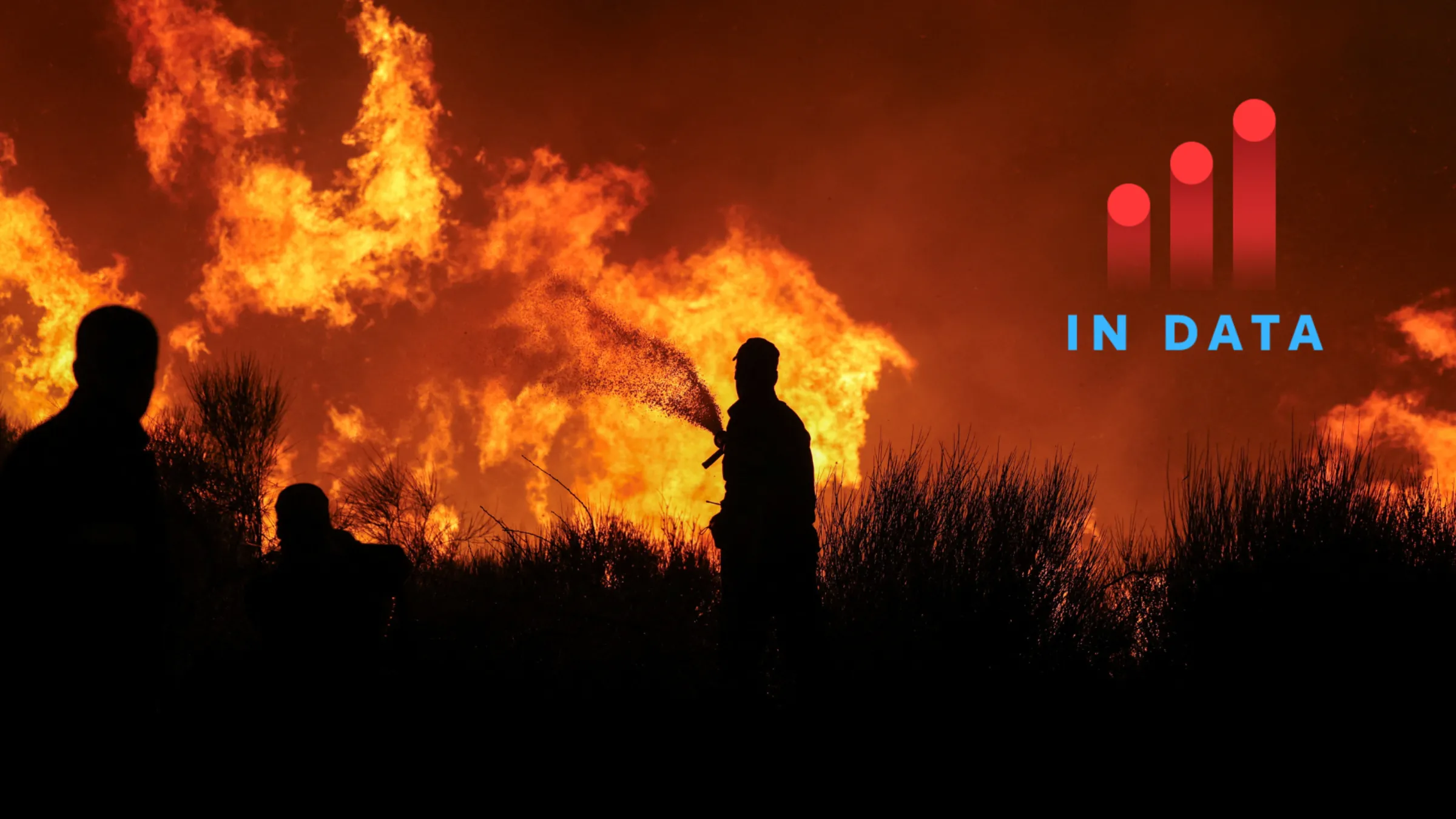Context is powered by the Thomson Reuters Foundation Newsroom.
Our Standards: Thomson Reuters Trust Principles

Firefighters try to extinguish a wildfire burning in Dionysos, Greece, August 12, 2024. REUTERS/Alexandros Avramidis
Wildfires blazing across sweltering Europe spotlight how climate change and human activities turn the continent into a tinder-box.
Wildfires are raging across Europe this week, with thousands of firefighters battling blazes in Spain, Portugal, Greece, Turkey and the Balkans as temperatures soar to over 40 Celsius (104 Fahrenheit) across the world's fastest-warming continent.
Hundreds of people have been evacuated across the Mediterranean region and in Spain extreme heat and strong winds spawned "fire whirls", produced when fires move from confined spots to more open areas, creating fireballs.
Every year, more than 1,000 wildfires burn through hundreds of thousands of hectares of land in Europe, releasing planet-warming gases and turning climate-saving assets to ashes.
With woodlands spanning almost 40% of its total land area, Europe is boosting efforts to fight blazes as climate change drives hotter and drier weather, which is expected to double the fire risk by 2100.
Here's how wildfires affect Europe, where temperatures are rising at about double the rate of the global average, and what is being done to protect communities and forests.
Data from 2024 shows fires burned 419,000 hectares (1 million acres), which is slightly above the average registered between 2006 and 2023.
Around 9,500 fires, including one on the outskirts of Athens, burned nearly 44,500 hectares of land in Greece alone. Portugal had its worst year for forest fires since 2017, with 147,00 hectares affected.
The year 2023 was the fourth worst since 2000 in terms of total burnt surface area at more than 500,000 hectares.
The deadliest fires in recent years happened in Greece in 2018, when 104 people were killed in the seaside town of Mati, and in Portugal, where wildfires killed 66 people in 2017.
Wildfires are also releasing tonnes of planet-warming gases and destroying carbon sinks, exacerbating climate change and polluting the air, leading to respiratory illnesses.
Catastrophic blazes that once happened every 100 years will become 1.3 to 1.5 times more likely by the turn of the century, according to scientists.
Greenhouse gas emissions from human activities have heated the planet by around 1.3 C (2.3 F), leading to higher temperatures during extreme weather and sucking moisture from vegetation, turning it into fire fuel.
Forest and land management play a key role in limiting fire. But as people move from rural areas to cities, land is abandoned to nature, allowing growth of vegetation that fuels blazes.
As suburbs push into rural areas, there is also more risk of people starting accidental fires or deliberately igniting blazes.
According to European Union data, more than nine out of 10 fires can be traced to human activities, including deliberate arson and fires started accidentally, for example, with the use of disposable barbecues. Fires can also be ignited via electricity lines.
Dry soil, low humidity and high winds then fan flames, and abundant fuel from deserted woodlands can lead to mega fires that can overwhelm traditional firefighting techniques.
Europe's civil protection unit is coordinating efforts to protect wildfire-prone countries, with 22 firefighting planes, four helicopters and 650 firefighters positioned in high-risk locations in France, Greece, Portugal and Spain.
EU countries are also spending more on preventative measures, such as creating fire breaks and carrying out prescribed burns, in which fires are set and managed to reduce wildfires.
Hard-hit Portugal has reversed its spending priorities and now dedicates more funds to prevention versus suppression. The proportion of total government spending on fire prevention measures has risen from 20% in 2017 to 61% in 2022.
However, a new report from the bloc's spending watchdog found that EU funds to prevent forest fires had been poorly targeted and based on outdated maps in several countries.
One area selected for funds in Portugal was underwater, as the hazard map did not include a newly built dam.
The EU's landmark Green Deal aims to slow the impact of global warming and reduce fire risk by cutting greenhouse gas emissions.
But some member states are pushing to weaken nature restoration and deforestation rules meant to protect biodiversity, which forestry experts say is key to protecting woodlands from fires.
This story was updated on Wednesday, August 13, 2025 with details of latest wildfires.
($1 = 0.8666 euros)
(Reporting by Joanna Gill; Editing by Ayla Jean Yackley.)
Context is powered by the Thomson Reuters Foundation Newsroom.
Our Standards: Thomson Reuters Trust Principles